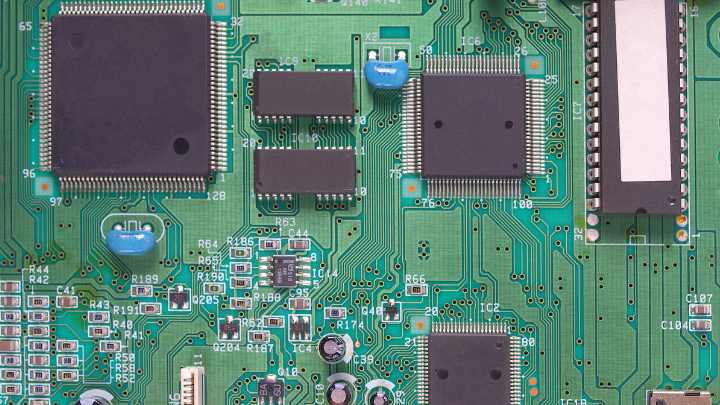PCB Cost Comparison Demystified the Most Affordable Solutions
Introduction of PCB Cost Comparison
In the intricate world of Printed Circuit Board (PCB) manufacturing, grasping the nuances of cost factors is pivotal for both industry insiders and those seeking to procure PCBs. Unlike the common approach of directly comparing price tags, a more insightful analysis delves into the underlying elements that shape these costs. This article ventures beyond the surface-level price comparisons to unravel the multifaceted nature of PCB manufacturing costs.
The intricacy of PCB costs lies not just in the visible factors, such as materials and design complexity, but also in the more subtle aspects like production efficiency and long-term value. For entrepreneurs, project managers, and procurement specialists, this distinction is crucial. A deeper understanding of these cost components not only enables more informed purchasing decisions but also unveils opportunities for cost optimization without compromising on quality.
In the ensuing sections, we will dissect the various elements that contribute to the PCB pricing structure, offering a perspective that transcends mere dollar amounts. By doing so, we aim to equip our audience with the knowledge to navigate the PCB market with confidence and discernment, ensuring their investments yield maximum value in the long run.
1. Understanding PCB Cost Factors
In the realm of PCB manufacturing, costs are influenced by a myriad of factors, each interplaying in a complex dance that defines the final price. This section delves into these critical elements, shedding light on aspects often overlooked in standard cost analyses.
1.1. Material Selection and Costs
The choice of materials in PCB manufacturing isn’t just a matter of picking the cheapest available option. It’s about understanding the balance between cost, performance, and longevity. Here, we explore not just the cost of raw PCB materials like copper and FR4, but also the implications of these choices:
- Performance vs. Price: High-performance materials, such as high-frequency laminates, offer better functionality but at a higher cost. Selecting the right material involves weighing the need for performance against budget constraints.
- Long-Term Reliability: Cheaper materials might reduce upfront costs, but they can compromise the PCB’s reliability and lifespan, leading to higher costs in the long run due to failures and replacements.
- Environmental Considerations: Eco-friendly materials might carry a premium, but they can reduce environmental compliance costs and appeal to a market increasingly concerned with sustainability, The choice of PCB material relies on the application, environmental conditions, and desired PCB outcomes. When selecting PCB materials, it’s crucial to consider factors like electrical performance, thermal performance, mechanical strength, chemical resistance, and environmental concerns to achieve optimal results in electronic projects. check this PCB material guide.
1.2. PCB Design Complexity
The complexity of a PCB design has a direct impact on manufacturing costs. Intricate designs require more precise manufacturing processes and often result in lower yields, both of which contribute to higher costs:
- Layer Count and Density: More layers and higher circuit density increase manufacturing complexity and costs. This includes the cost of additional material and the increased risk of manufacturing defects.
- Miniaturization and Precision: As electronic devices become smaller, the demand for miniaturized PCBs grows. Such precision comes at a price, reflecting in the cost of specialized equipment and skilled labor.
1.3. Production Volume and Scale
The scale of production is a pivotal factor in determining PCB costs. This section looks beyond the simple equation of ‘more units equal lower cost per unit’ to uncover the intricacies involved:
- Economies of Scale: Larger orders typically reduce the cost per unit, but this isn’t a linear relationship. Understanding the breakpoints where cost savings become significant is key for budget optimization.
- Setup Costs: Initial setup costs for a PCB run are substantial. Spreading these costs over a larger production run can significantly reduce the per-unit cost.
- Demand Fluctuations: Market demand can influence material costs and availability, impacting the overall cost of production. Strategic planning and forecasting can mitigate these effects.
2. Calculating PCB Manufacturing Costs
The calculation of PCB manufacturing costs is an intricate process that goes beyond mere arithmetic. It requires a keen understanding of the interplay between various elements that drive these costs. This section delves into these critical aspects, offering unique insights often overlooked in conventional cost analyses. To ensure you’re getting the best value for your budget, explore our guide on Affordable PCB Fabrication, where cost-efficiency meets quality
2.1. The Role of Size and Quantity
PCB manufacturing costs are significantly influenced by the physical dimensions of the board and the quantity being produced. This relationship, however, is not always straightforward:
- Size-Related Costs: Larger PCBs require more materials and often lead to increased waste, but they might also allow for more efficient component placement. Understanding the optimal board size for a given design can yield cost efficiencies.
- Quantity and Scalability: While larger quantities typically reduce the unit cost, it’s important to assess the scalability of production. At certain quantities, additional investments in machinery or labor might be required, altering the cost dynamics.
2.2. Advanced Features and Customizations
Modern PCBs often come with advanced features and customizations, each adding layers of complexity and cost to the manufacturing process:
- Surface Finishes and Plating: Options like ENIG (Electroless Nickel Immersion Gold) or HASL (Hot Air Solder Leveling) affect both the functionality and cost. A nuanced understanding of these finishes can lead to cost-effective choices without compromising on performance. Compare surface finish options in our detailed analysis of ENIG vs HASL to choose the best for your PCB
- Via Types and Techniques: The use of through-hole, blind, or buried vias impacts the manufacturing process’s complexity and cost. Choosing the right type of via for the application is crucial for cost management.
- Specialty Materials and Processes: The use of high-speed or high-frequency materials, along with specialized processes like impedance control, adds to the cost but might be essential for certain applications.
2.3. Labor and Production Time
Labor and production time are significant factors in PCB manufacturing costs, often varying based on the manufacturer’s location and expertise:
- Geographical Variations: Labor costs can vary significantly between different regions. Manufacturers need to balance these costs with other factors like shipping times and quality standards.
- Production Efficiency: More efficient production processes can reduce labor costs and turnaround times. However, investments in efficiency often require upfront costs, which need to be amortized over multiple production runs.
- Expertise and Specialization: Highly specialized designs might require skilled labor, which can increase costs. Balancing the need for expertise with cost considerations is essential for budget optimization.
| Calculating PCB Manufacturing Costs | |
|---|---|
| Section | Details |
| 2.1. The Role of Size and Quantity | Discusses how the physical dimensions and quantity of PCBs impact manufacturing costs. |
| 2.2. Advanced Features and Customizations | Explores how additional features like surface finishes, via types, and specialty materials affect costs. |
| 2.3. Labor and Production Time | Examines the influence of labor costs, production efficiency, and geographical variations on the overall cost. |
3. PCB Pricing Comparison: A Critical Analysis
In the nuanced world of PCB manufacturing, pricing comparison is an art as much as it is a science. This section ventures into a critical analysis of PCB pricing, focusing on factors often overlooked or underappreciated in the industry.
3.1. PCB Price Analysis of Different Manufacturers
Comparing prices among different PCB manufacturers reveals more than just numerical differences; it uncovers the diverse strategies and efficiencies employed by these manufacturers. However, this comparison is not straightforward:
- Manufacturing Location and Its Impact: The geographical location of a manufacturer significantly influences its pricing. Labor costs, logistical expenses, and access to materials vary widely across different regions, impacting the final price.
- Technological Advancements and Production Efficiency: Manufacturers who invest in advanced manufacturing technologies often have higher initial pricing. However, these technologies can lead to better quality and more efficient production in the long run, offering better value.
- Customization and Flexibility: Manufacturers providing high levels of customization and flexibility often price their services higher. This premium is not merely for the added service but also reflects the complexity and resource allocation required for tailored solutions.
3.2. Hidden Costs and Considerations
When analyzing PCB prices, one must consider the hidden costs that are not immediately apparent in the quoted figures:
- Quality and Reliability: Lower prices might be enticing, but they can sometimes come at the cost of quality and reliability. The expenses related to failures and defects can far outweigh initial savings.
- Lead Times and Responsiveness: Manufacturers with shorter lead times might charge more, but they offer value in terms of quicker market entry and adaptability to changes.
- Post-Sale Support and Warranty: The quality of post-sale support and warranty terms can add significant value to a purchase. Manufacturers offering robust support and warranty might have higher prices but provide peace of mind and long-term cost savings.
3.3. Long-Term Cost Efficiency
The true cost of a PCB is not just in its initial price but in its performance and lifespan:
- Lifecycle Costs: Analyzing the total cost of ownership, including maintenance, repairs, and potential downtimes, provides a more accurate picture of long-term cost efficiency.
- Scalability and Future-proofing: Manufacturers who offer scalable solutions and future-proof designs may charge more upfront but can provide cost savings as technology evolves and needs change.
- Environmental Compliance and Sustainability: Compliance with environmental regulations and sustainability practices can influence pricing. However, these practices can lead to cost savings in terms of waste management and energy efficiency, and they are increasingly important in a socially conscious market.
4. Maximizing Value in PCB Procurement
The ultimate goal in PCB procurement is not just to minimize costs, but to maximize overall value. This section focuses on strategies and considerations that are critical yet often overlooked in the pursuit of obtaining the best value in PCB purchasing decisions.
4.1. Strategic Sourcing and Vendor Relationships
Establishing a strategic relationship with PCB manufacturers can unlock value that goes beyond simple cost savings. This involves a deeper engagement with suppliers to create mutually beneficial partnerships:
- Long-Term Agreements and Volume Commitments: Securing long-term agreements with manufacturers can lead to better pricing, priority service, and more responsive support.
- Collaborative Design and Development: Working closely with manufacturers during the design phase can optimize production efficiency and reduce costs without compromising quality.
- Supply Chain Transparency: Choosing suppliers who offer transparency in their supply chain can ensure reliability and ethical sourcing, which is increasingly important in today’s market.
4.2. Leveraging Technology for Cost Optimization
Advancements in technology not only enhance the capabilities of PCBs but also offer opportunities for cost savings:
- Design Software and Simulation Tools: Utilizing advanced design tools and simulation software can minimize errors and reduce costly redesigns and prototypes.
- Automated Procurement and Inventory Management: Implementing automated procurement systems and efficient inventory management can reduce overhead costs and minimize waste.
- Adoption of Industry 4.0 Practices: Embracing Industry 4.0 practices, such as IoT integration and smart manufacturing, can lead to significant efficiencies and cost savings over time.
4.3. The Role of Quality Assurance in Cost Management
Investing in quality assurance is a key strategy for maximizing value in PCB procurement:
- Preventive Quality Measures: Implementing rigorous quality control measures at the initial stages of manufacturing can significantly reduce the likelihood of defects and the associated costs.
- Certifications and Standards Compliance: Ensuring that manufacturers adhere to international quality standards and certifications can lead to higher reliability and reduce the risk of costly failures.
- Continuous Improvement and Feedback Loops: Establishing a system of continuous improvement and feedback with manufacturers can lead to ongoing enhancements in quality and efficiency.
In maximizing value in PCB procurement, a holistic approach that considers strategic partnerships, technological advancements, and a strong focus on quality assurance is imperative. This approach not only reduces costs but also ensures long-term reliability and sustainability, aligning with the priorities of a discerning and cost-conscious audience

Conclusion
In the multifaceted world of PCB procurement, understanding the nuances of cost comparison is more than a necessity—it’s a strategic advantage. Throughout this article, we’ve explored the various factors that influence PCB pricing, delved into the complexities of manufacturing costs, critically analyzed different pricing strategies, and offered insights into maximizing value in procurement. This journey has not only highlighted the importance of looking beyond the surface-level cost but also emphasized the need for a deeper understanding of the value offered by different PCB manufacturing options.
As we conclude, it’s essential to remember that the lowest price doesn’t always equate to the best value. Strategic sourcing, technological leverage, and a strong emphasis on quality assurance are key to making informed decisions that contribute to the long-term success of your projects.
For those seeking expert guidance and high-quality PCB solutions, Finest Printed Circuit Board Ltd stands ready to assist. With two decades of industry experience, state-of-the-art facilities, and a commitment to excellence, we offer one-stop PCB and PCB Prototype Assembly services tailored to your unique needs. We invite you to reach out to us for inquiries and to explore how our expertise can enhance your projects’ efficiency and cost-effectiveness.



